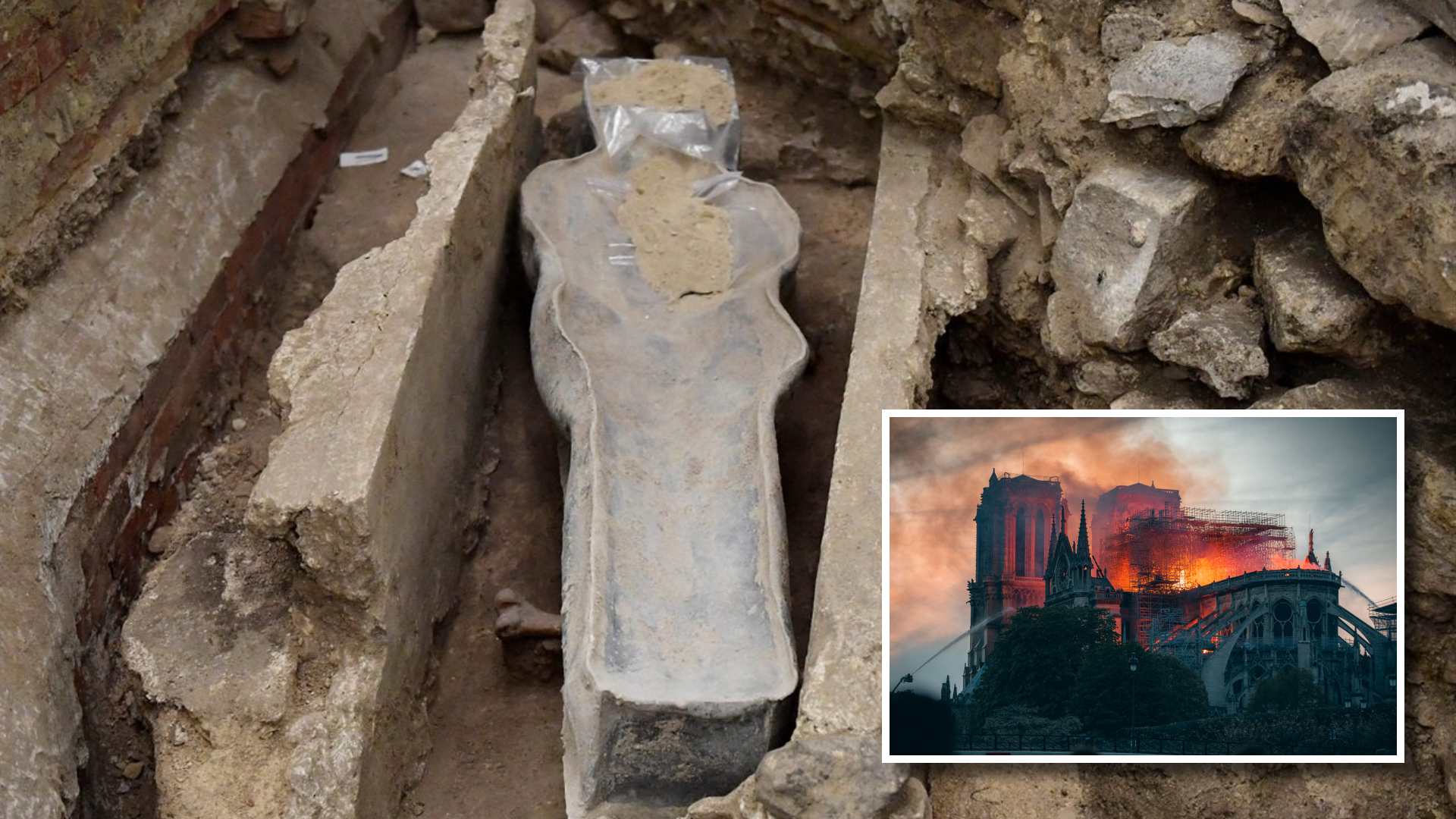Ancient History
Archeologists To Open Mysterious Lead Sarcophagus Discovered Underneath Notre Dame

A human-shaped lead sarcophagus uncovered under the floor at the fire-ravaged Notre Dame Cathedral in Paris has aroused considerable conjecture regarding its contents.
Following the tragic fire in 2019, archeologists were brought in to assist rebuild and maintain the cathedral. During the fire, the vaulted ceiling tumbled to the floor and opened up a 19th-century heating system and, below, a succession of levels. Those strata included the coffin, among other artefacts, including painted statues, that were uncovered in March.
The sarcophagus was excavated, and archeologists decided that it is in fair condition despite minor holes, according to the National Institute of Preventive Archaeological Research (Inrap) (Inrap). It had bent somewhat but remained shut, The Daily Beast said. Archeologists think it may date back to the 14th century, but more investigation after it is opened will assist identify the period of origin and the dead individual’s identity.
According to AFP, head archaeologist Christophe Besnier said: “If it turns out that it is in fact a sarcophagus from the Middle Ages, we are dealing with an extremely rare burial practice. Here, we don’t have a funeral plate and, if you look at the period, it’s still a hypothesis; it’s from the 14th century or a bit later.”
Besnier added that the 19th-century architect and restorer Eugene Viollet-le-Duc discovered sarcophagi constructed of lead in French cathedrals, but said they were more recent, having been found with a burial plate intended to identify the deceased.
The sarcophagus is presently kept in a safe place. It will be transferred to the Institute of Forensic Medicine for additional investigation, according CBS News.
Typos, corrections and/or news tips? Email us at Contact@TheMindUnleashed.com
